The 30 Greatest Glam Rock Albums of All Time
Featuring classics from Elton John, T. Rex, The Lemon Twigs, Suzi Quatro, Roxy Music and more.
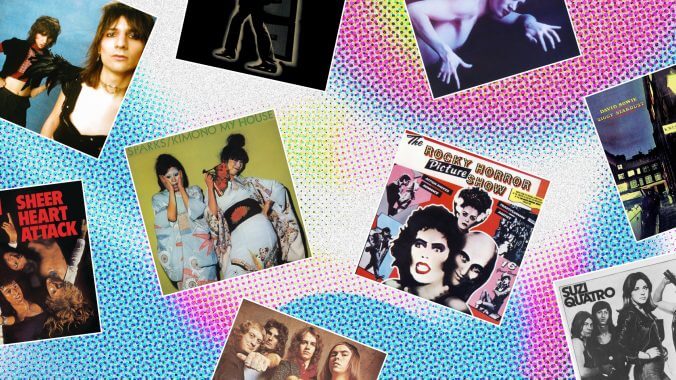
In his indelible history of glam rock, critic Simon Reynolds described the genre as “alien, sensationalistic, hysterical in both senses, a place where the sublime and ridiculous merge and become indistinguishable.” It’s a perfect summation of what made, and continues to make, this music so impactful to thousands of artists seeking something on the far reaches of the usual. Those descriptors could easily apply to any number of modern musicians: Lady Gaga, Outkast, Janelle Monae, Fever Ray. What unites them all isn’t a unified sound but a glittery spirit that was first summoned in post-Summer of Love world of the U.K. and was brushed aside by the arrival of punk. It never truly vanished from the scene but only grew brighter and dimmer as the world’s tastes changed and adjusted for the introduction of new technologies and historical events.
By narrowing the scope of this list to just rock (and, by association, hair metal) albums, we were forced to leave off many worthy artists and albums. But that’s only because we have to acknowledge that it was rock music that brought glam into the public consciousness via oversized public figures like Bowie, Elton, Marc Bolan and Bryan Ferry. And the more modern records that we highlight here were the ones most closely following in the spangled path those folks cut through the pop charts. Glam has continued to evolve, leaning into its theatricality or freely enveloping new ideas that don’t take away from the fabulous and outrageous qualities that made the music so scintillating some 50 years ago. We’d like you to come and meet what our music team has chosen as the best glam records ever recorded. We think we’ll blow your minds. —Robert Ham, Associate Music Editor
30. Hedwig and the Angry Inch (1998)
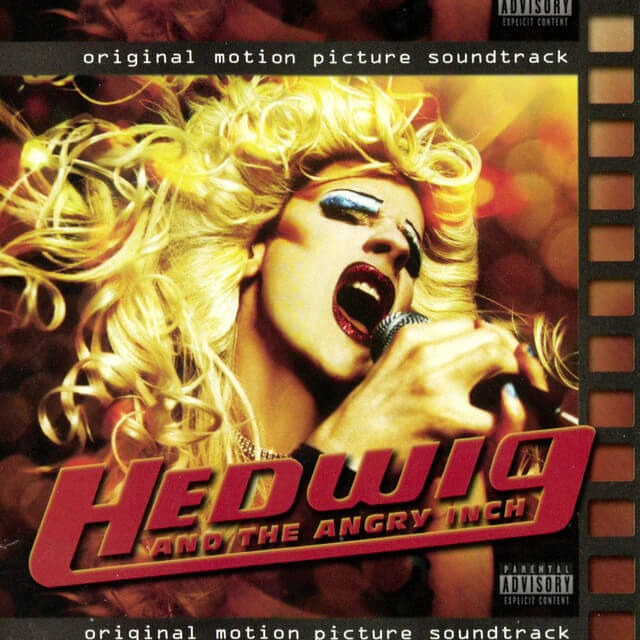 Mike Potter, the artist responsible for the makeup and the wigs for several theater productions of Hedwig & the Angry Inch as well as the 1998 film adaptation, likens the musical to Plato’s Symposium, a dialogue from the 4th century that explores the wonders of Eros. Heady praise for a story about a German woman who, after a botched sex change operation, runs away to Kansas with a soldier and spends her nights performing bruising and beautiful glam rock tunes to befuddled locals. That’s just how monumental Hedwig felt when it was first produced Off-Broadway and how much it is still inspiring musicians, drag artists and Broadway producers alike. The music, inspired in no small part by David Bowie and Iggy Pop and Jobriath, brilliantly recognizes the connections between rock show bombast and the artificial glitz of the Broadway stage, marrying the two aesthetics into songs that burst with life, lust and all the sticky feelings and fluids that both can bring forth. —Robert Ham
Mike Potter, the artist responsible for the makeup and the wigs for several theater productions of Hedwig & the Angry Inch as well as the 1998 film adaptation, likens the musical to Plato’s Symposium, a dialogue from the 4th century that explores the wonders of Eros. Heady praise for a story about a German woman who, after a botched sex change operation, runs away to Kansas with a soldier and spends her nights performing bruising and beautiful glam rock tunes to befuddled locals. That’s just how monumental Hedwig felt when it was first produced Off-Broadway and how much it is still inspiring musicians, drag artists and Broadway producers alike. The music, inspired in no small part by David Bowie and Iggy Pop and Jobriath, brilliantly recognizes the connections between rock show bombast and the artificial glitz of the Broadway stage, marrying the two aesthetics into songs that burst with life, lust and all the sticky feelings and fluids that both can bring forth. —Robert Ham
29. Poison: Look What the Cat Dragged In (1986)
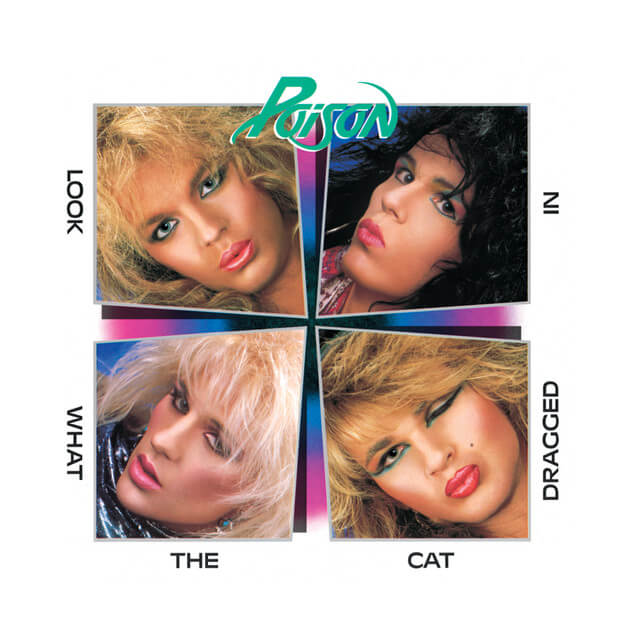 Mechanicsburg, Pennsylvania glam metal gods Poison came out of the gates screaming, and I love them for it. Look What the Cat Dragged In is a terrific debut record—and it seems like the general public agrees, seeing that the album was certified 3x platinum by 1990. Bolstered by Top 10 hit (and Guitar Hero III masterpiece) “Talk Dirty to Me,” Look What the Cat Dragged In is essential glam hot rock; Bret Michaels was a sex-symbol for a reason, right? C.C. DeVille remains one of the most underrated guitarists of his era, as his “Talk Dirty to Me” solo still holds up over 35 years later. Oh, and I can’t forget to mention “I Want Action” and “I Won’t Forget You,” two incredibly catchy (the latter a perfect power ballad) late-cycle singles released once the album started turning heads over a year after its initial release. MTV helped bolster Look What the Cat Dragged In’s popularity, but the source material was unbeatable from the jump. —Matt Mitchell
Mechanicsburg, Pennsylvania glam metal gods Poison came out of the gates screaming, and I love them for it. Look What the Cat Dragged In is a terrific debut record—and it seems like the general public agrees, seeing that the album was certified 3x platinum by 1990. Bolstered by Top 10 hit (and Guitar Hero III masterpiece) “Talk Dirty to Me,” Look What the Cat Dragged In is essential glam hot rock; Bret Michaels was a sex-symbol for a reason, right? C.C. DeVille remains one of the most underrated guitarists of his era, as his “Talk Dirty to Me” solo still holds up over 35 years later. Oh, and I can’t forget to mention “I Want Action” and “I Won’t Forget You,” two incredibly catchy (the latter a perfect power ballad) late-cycle singles released once the album started turning heads over a year after its initial release. MTV helped bolster Look What the Cat Dragged In’s popularity, but the source material was unbeatable from the jump. —Matt Mitchell
28. Wizzard: Wizzard Brew (1973)
No artist understood glam’s connections to late ’50s / early ’60s rock better than Roy Wood. That was evident during his brief tenure as a member of Electric Light Orchestra and was abundant in his subsequent work in Wizzard, the group he started after jumping ship from ELO in 1972. The ensemble’s first album Wizzard Brew (known as Wizzard’s Brew in North America) is a wild ride, bursting out of the gate with a meaty slice of glam goodness before sliding into a 13-minute track that marries free jazz skronk and glitter stomp. The idiosyncratic record ping pongs all over the map from there but somehow never losing its center courtesy of the warped, guiding vision of Wood, himself. No matter how times I’ve spun this record on my turntable, I still get confused and delightfully lost in the military marches and French horn melodies and the light classical meets “A Day In The Life” tidal wave comedown that closes out the final moments of “Wear a Fast Gun.” —RH
27. The Lemon Twigs: Songs For the General Public (2020)
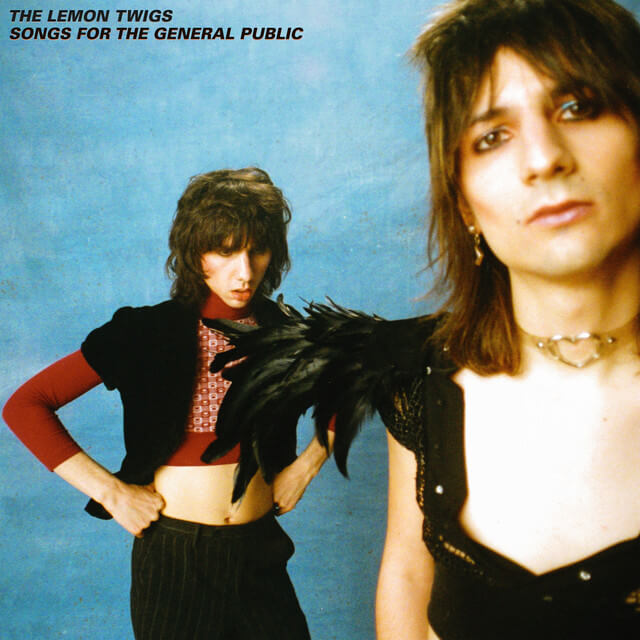 The third album from Long Island rock revivalists The Lemon Twigs was greatly affected by COVID. Initially slated for a May 2020 release, the pandemic pushed it back to late summer and it never really got off the ground in a meaningful way—at least not in critical circles. But brothers Brian and Michael D’Addario know how to write a glam rock song, and tracks like “The One,” “Leather Together” and “Live in Favor of Tomorrow” are an amalgam of song-cycle diversity and pitch-perfect song construction. Some real standouts, however, are the Jim Steinman-conjuring “Hog” and the anthemic, absurdist “Moon”—both tracks showcasing just how indebted to rock ‘n’ roll’s sexiest sub-genre they are. Songs For the General Public was co-produced by Foxygen’s Jonathan Rado, a pairing that makes too much sense, to be honest. The Lemon Twigs built on the ambition of General Public with their singer/songwriter masterpiece Everything Harmony this year, but the raw, unfiltered power glam of the former endures just as greatly. —MM
The third album from Long Island rock revivalists The Lemon Twigs was greatly affected by COVID. Initially slated for a May 2020 release, the pandemic pushed it back to late summer and it never really got off the ground in a meaningful way—at least not in critical circles. But brothers Brian and Michael D’Addario know how to write a glam rock song, and tracks like “The One,” “Leather Together” and “Live in Favor of Tomorrow” are an amalgam of song-cycle diversity and pitch-perfect song construction. Some real standouts, however, are the Jim Steinman-conjuring “Hog” and the anthemic, absurdist “Moon”—both tracks showcasing just how indebted to rock ‘n’ roll’s sexiest sub-genre they are. Songs For the General Public was co-produced by Foxygen’s Jonathan Rado, a pairing that makes too much sense, to be honest. The Lemon Twigs built on the ambition of General Public with their singer/songwriter masterpiece Everything Harmony this year, but the raw, unfiltered power glam of the former endures just as greatly. —MM
26. Slade: Slayed? (1972)
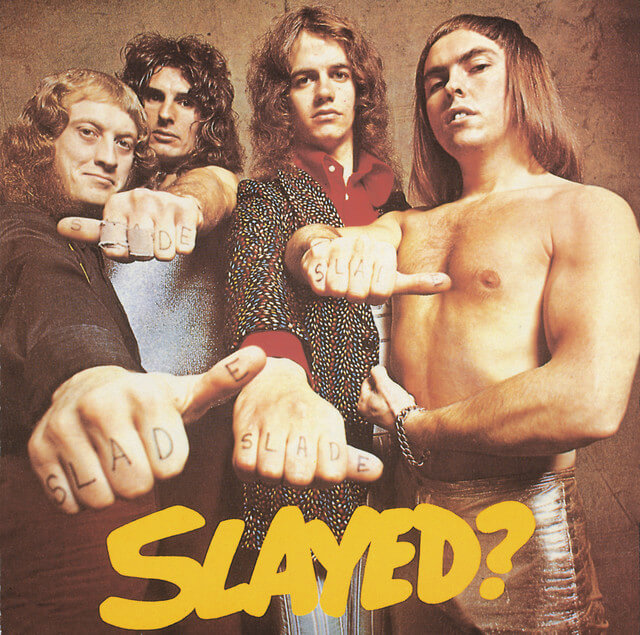 How best to describe the vocals of Noddy Holder, the charming leader of carnivalesque glam band Slade? The reedy, almost whiny quality of his voice doesn’t sound like it should fit with anything but shower singing and karaoke bars. Yet, put him in front of a kick ass rock band playing chug-a-lug songs with lyrics (and song titles) that play fast and loose with the English language and it just fits. Holder instantly becomes a rock star. And the rest of the band is elevated along with him as they ramble through catchy tunes best suited for drunken revelry and soccer stadium chants. Is it any wonder that the band became an essential influence on the glam metal scene? Slade set the template. And nowhere did the quartet hit their mark truer than their third album Slayed?. No room for balladry or soft touch moments here. Just tunes to help break the speed the limit or the jaws of some goon that steps to you in the pub. They may have been missing the feminine qualities that makes glam such an alluring genre all these years after its emergence but they make up for it with oodles of sass and killer riffs. —RH
How best to describe the vocals of Noddy Holder, the charming leader of carnivalesque glam band Slade? The reedy, almost whiny quality of his voice doesn’t sound like it should fit with anything but shower singing and karaoke bars. Yet, put him in front of a kick ass rock band playing chug-a-lug songs with lyrics (and song titles) that play fast and loose with the English language and it just fits. Holder instantly becomes a rock star. And the rest of the band is elevated along with him as they ramble through catchy tunes best suited for drunken revelry and soccer stadium chants. Is it any wonder that the band became an essential influence on the glam metal scene? Slade set the template. And nowhere did the quartet hit their mark truer than their third album Slayed?. No room for balladry or soft touch moments here. Just tunes to help break the speed the limit or the jaws of some goon that steps to you in the pub. They may have been missing the feminine qualities that makes glam such an alluring genre all these years after its emergence but they make up for it with oodles of sass and killer riffs. —RH
25. Alice Cooper: Billion Dollar Babies (1973)
 Let’s please set aside the iffy politics of Alice Cooper, the singer, and continue to celebrate Alice Cooper, the band. By 1973, the group was a sensation known for their theatrical live performances and the strange magic that brought heshers and wallflowers together for the common cause of worshiping at this gangly batch of musicians from Detroit. Amazing what a little fake decapitation can do. The connective tissue was the way Alice Cooper and the rest of the band spoke to the misfit inside so many people at the time. Their lyrics had a literary bent even as they expounded on such banal subjects as general elections and the fear of going to the dentist. And the taboo matter they dabbled in like necrophilia and sexual violence were presented in such a tongue-in-cheek matter that it seemed like too much work to get mad at them. Of the seven albums that the group made before Alice Cooper, the man eclipsed the rest of his bandmates, there are truly no duds, but it’s this minor masterpiece that remains the most venomous and wicked of the bunch. —RH
Let’s please set aside the iffy politics of Alice Cooper, the singer, and continue to celebrate Alice Cooper, the band. By 1973, the group was a sensation known for their theatrical live performances and the strange magic that brought heshers and wallflowers together for the common cause of worshiping at this gangly batch of musicians from Detroit. Amazing what a little fake decapitation can do. The connective tissue was the way Alice Cooper and the rest of the band spoke to the misfit inside so many people at the time. Their lyrics had a literary bent even as they expounded on such banal subjects as general elections and the fear of going to the dentist. And the taboo matter they dabbled in like necrophilia and sexual violence were presented in such a tongue-in-cheek matter that it seemed like too much work to get mad at them. Of the seven albums that the group made before Alice Cooper, the man eclipsed the rest of his bandmates, there are truly no duds, but it’s this minor masterpiece that remains the most venomous and wicked of the bunch. —RH
24. KISS: Love Gun (1977)
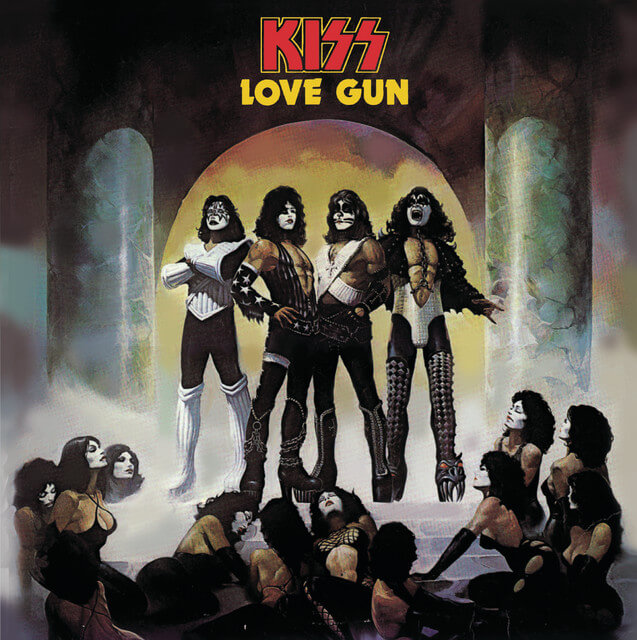 KISS will always be a live band. But Love Gun was released in June of 1977 as KISS was reaching the height of their popularity. Love Gun was still frothing with sex, drugs, and rock and roll fun—from the Ken Kelly cover art depicting the members of KISS standing in front of Roman pillars surrounded by busty, makeup-caked women, to the album’s title, which is not actually about a firearm. Love Gun includes a number of KISS’s live staples. “I Stole Your Love” opens the album (and has opened countless shows) for a reason, jumping through the speakers with a fiery riff inspired by Deep Purple’s “Burn.” It killed in 1977, and it kills all these years later. The title track has always been an interesting one—with a dramatic chorus that never quite comes to terms with the fact Paul Stanley is just singing about his dick. Gene Simmons takes a turn singing about his dick on “Plaster Caster,” a catchy homage to the real-life Cynthia “Plaster Caster,” who molded plaster penises of musicians. The God of Thunder’s deep cuts “Got Love For Sale” and “Almost Human” are much better, with the latter featuring an evil, medieval riff and a murky, feedback-laced solo from Ace Frehley, one of his best. And the Space Ace absolutely owns his first turn on vocals on “Shock Me,” inspired by the night he was electrocuted on stage in Florida in 1976. Probably the most interesting song on Love Gun wasn’t even written by KISS. The record closes with “Then She Kissed Me,” a gender-reversed version of The Crystals’ 1963 hit, which undoubtedly left stoners across America wondering who’d laced their weed. —Mark Lore
KISS will always be a live band. But Love Gun was released in June of 1977 as KISS was reaching the height of their popularity. Love Gun was still frothing with sex, drugs, and rock and roll fun—from the Ken Kelly cover art depicting the members of KISS standing in front of Roman pillars surrounded by busty, makeup-caked women, to the album’s title, which is not actually about a firearm. Love Gun includes a number of KISS’s live staples. “I Stole Your Love” opens the album (and has opened countless shows) for a reason, jumping through the speakers with a fiery riff inspired by Deep Purple’s “Burn.” It killed in 1977, and it kills all these years later. The title track has always been an interesting one—with a dramatic chorus that never quite comes to terms with the fact Paul Stanley is just singing about his dick. Gene Simmons takes a turn singing about his dick on “Plaster Caster,” a catchy homage to the real-life Cynthia “Plaster Caster,” who molded plaster penises of musicians. The God of Thunder’s deep cuts “Got Love For Sale” and “Almost Human” are much better, with the latter featuring an evil, medieval riff and a murky, feedback-laced solo from Ace Frehley, one of his best. And the Space Ace absolutely owns his first turn on vocals on “Shock Me,” inspired by the night he was electrocuted on stage in Florida in 1976. Probably the most interesting song on Love Gun wasn’t even written by KISS. The record closes with “Then She Kissed Me,” a gender-reversed version of The Crystals’ 1963 hit, which undoubtedly left stoners across America wondering who’d laced their weed. —Mark Lore
23. Foxygen: Hang (2017)
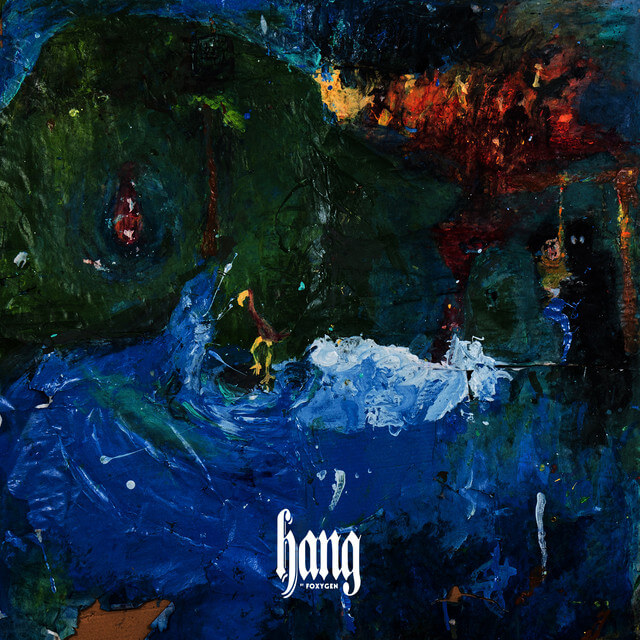 The fifth album from California duo Foxygen is not only their very best, but it might just be the single greatest iteration of glam rock this century. Hang is theatrical, catchy and larger-than-life. Melding a baroque, Nixon-era attitude with Vaudevillian campiness, the chemistry between multi-instrumentalist Jonathan Rado and vocalist Sam France is unbeatable and unmistakable across eight tracks. “Follow the Leader” and “America” sound straight out of a time machine, but it’s the standout magic of “Avalon” that puts Hang into the stratosphere. Like a compassionate rendering of every single influence the duo has ever had, “Avalon” envelopes a choir of mystical voices around that of France, who soars and tumbles across a dozen sonic planes before landing center-stage and bursting into a kaleidoscopic glow of energy. Foxygen cemented their legacy on Hang, as they tap so vividly into satirical pastorals of grandiose, audacious fits of glam majesty. —MM
The fifth album from California duo Foxygen is not only their very best, but it might just be the single greatest iteration of glam rock this century. Hang is theatrical, catchy and larger-than-life. Melding a baroque, Nixon-era attitude with Vaudevillian campiness, the chemistry between multi-instrumentalist Jonathan Rado and vocalist Sam France is unbeatable and unmistakable across eight tracks. “Follow the Leader” and “America” sound straight out of a time machine, but it’s the standout magic of “Avalon” that puts Hang into the stratosphere. Like a compassionate rendering of every single influence the duo has ever had, “Avalon” envelopes a choir of mystical voices around that of France, who soars and tumbles across a dozen sonic planes before landing center-stage and bursting into a kaleidoscopic glow of energy. Foxygen cemented their legacy on Hang, as they tap so vividly into satirical pastorals of grandiose, audacious fits of glam majesty. —MM
22. Elton John: Goodbye Yellow Brick Road (1973)
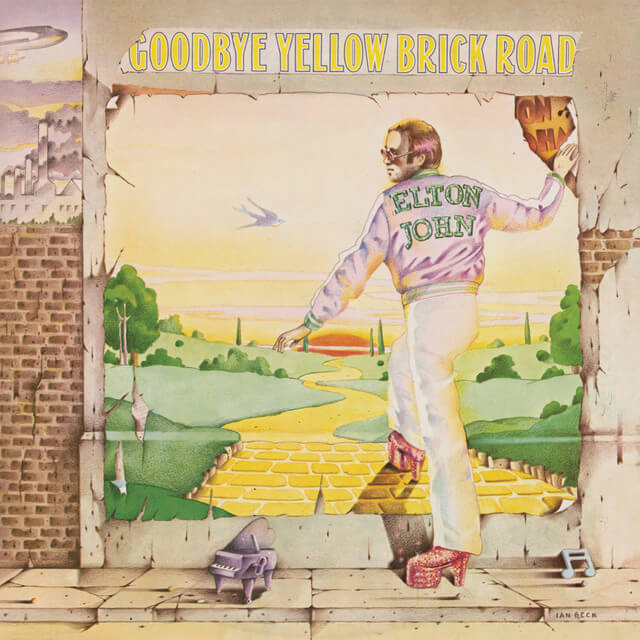 I don’t think it’s a stretch to say that Goodbye Yellow Brick Road is Elton John’s magnum opus. After Taupin wrote the lyrics in under three weeks, Elton composed all of the melodies in three days at the Pink Flamingo Hotel in Kingston, Jamaica. Initially, the album was supposed to be recorded at the Pink Flamingo, partly because the Rolling Stones had just made Goats Head Soup there. But, it was eventually put together at the Château d’Hérouville in France. With a 76-minute run-time and 17 tracks, the album tests every limit of what Taupin could do as a lyricist and what shape Elton could will his piano into. The title track, in-particular, plays around with Sgt. Pepper-style vocal layerings, as Elton makes his voice sound 10 harmonies thick. It’s cinematic, childlike and semi-autobiographical. Taupin, inspired by The Wizard of Oz, wrote about his parents’ farm in Lincolnshire and reflected on his time growing up there. It’s one of those balmy moments where we get a bird’s-eye-view into Taupin’s life and Elton is merely the translator on-tape. “You know you can’t hold me forever / I didn’t sign up with you / I’m not a present for your friends to open / This boy’s too young to be singing the blues,” Elton sings. The track peaked at #2 on the Billboard Hot 100, Goodbye Yellow Brick Road has sold 20-million copies worldwide and its legacy is unshakeable. —MM
I don’t think it’s a stretch to say that Goodbye Yellow Brick Road is Elton John’s magnum opus. After Taupin wrote the lyrics in under three weeks, Elton composed all of the melodies in three days at the Pink Flamingo Hotel in Kingston, Jamaica. Initially, the album was supposed to be recorded at the Pink Flamingo, partly because the Rolling Stones had just made Goats Head Soup there. But, it was eventually put together at the Château d’Hérouville in France. With a 76-minute run-time and 17 tracks, the album tests every limit of what Taupin could do as a lyricist and what shape Elton could will his piano into. The title track, in-particular, plays around with Sgt. Pepper-style vocal layerings, as Elton makes his voice sound 10 harmonies thick. It’s cinematic, childlike and semi-autobiographical. Taupin, inspired by The Wizard of Oz, wrote about his parents’ farm in Lincolnshire and reflected on his time growing up there. It’s one of those balmy moments where we get a bird’s-eye-view into Taupin’s life and Elton is merely the translator on-tape. “You know you can’t hold me forever / I didn’t sign up with you / I’m not a present for your friends to open / This boy’s too young to be singing the blues,” Elton sings. The track peaked at #2 on the Billboard Hot 100, Goodbye Yellow Brick Road has sold 20-million copies worldwide and its legacy is unshakeable. —MM
-

-

-

-

-

-

-

-

-

-

-

-

-

-

-

-

-

-

-

-

-

-

-

-

-

-

-

-

-

-

-

-

-

-

-

-

-

-

-

-

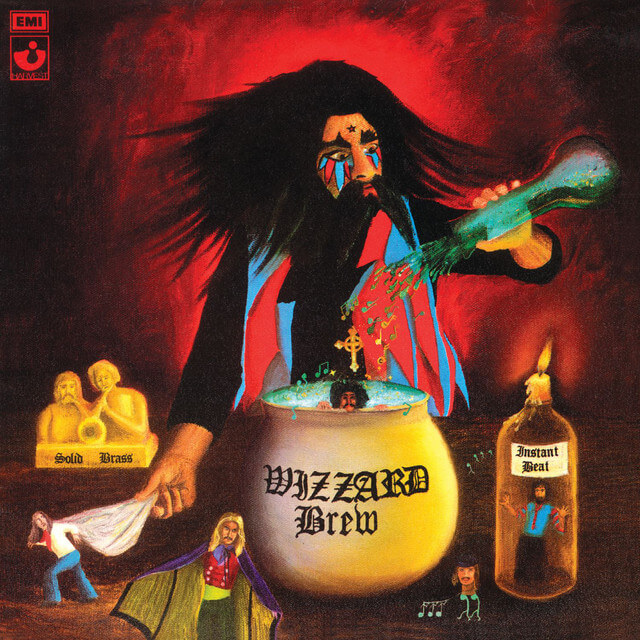
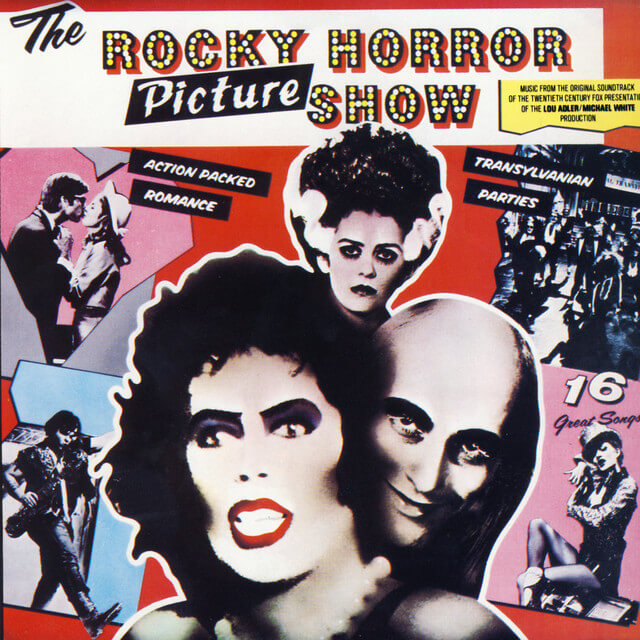 I may not be a musical theater nerd, but I am a Rocky Horror Picture Show nerd. I’m sure someone reading this is yelling about the inclusion of this album on the list, so let’s break it down. Scholars once characterized glam rock as: “offensive, commercial and cultural emasculation,” and that’s exactly the spirit of the 1975 horror musical. Glam rock has and will always be at the intersection of music and aesthetics. Tim Curry’s entrance as Dr. Frank-N-Furter in the jazz-rock “Sweet Transvestite” with exaggerated makeup, corset, fishnets and platform heels is as glam rock as it gets. Throw in the soul-inspired keys and harmonies of “Time Warp,” the grunge fuzz guitars of “Rose Tint My World,” Curry’s best Freddie Mercury impression on and stinging guitars of “I’m Going Home” and Meat Loaf’s solo as Eddie in “Hot Patootie – Bless My Soul” and you have the perfect soundtrack for an outrageous, androgynous glam rock masterpiece. —Olivia Abercrombie
I may not be a musical theater nerd, but I am a Rocky Horror Picture Show nerd. I’m sure someone reading this is yelling about the inclusion of this album on the list, so let’s break it down. Scholars once characterized glam rock as: “offensive, commercial and cultural emasculation,” and that’s exactly the spirit of the 1975 horror musical. Glam rock has and will always be at the intersection of music and aesthetics. Tim Curry’s entrance as Dr. Frank-N-Furter in the jazz-rock “Sweet Transvestite” with exaggerated makeup, corset, fishnets and platform heels is as glam rock as it gets. Throw in the soul-inspired keys and harmonies of “Time Warp,” the grunge fuzz guitars of “Rose Tint My World,” Curry’s best Freddie Mercury impression on and stinging guitars of “I’m Going Home” and Meat Loaf’s solo as Eddie in “Hot Patootie – Bless My Soul” and you have the perfect soundtrack for an outrageous, androgynous glam rock masterpiece. —Olivia Abercrombie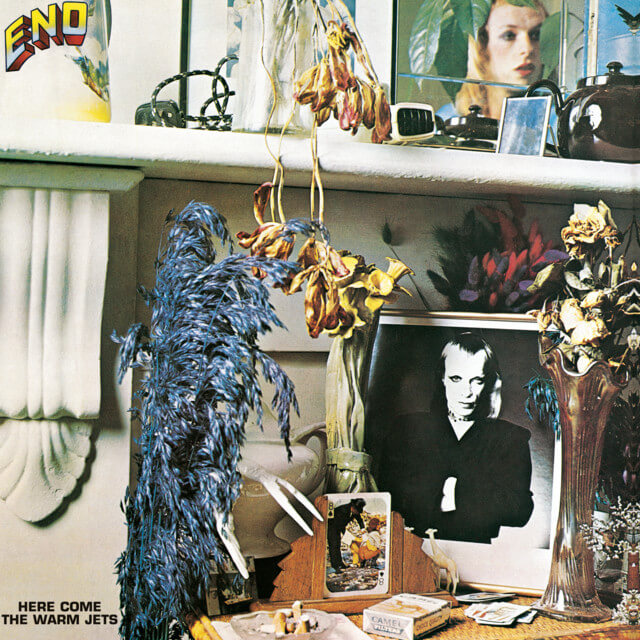 Brian Eno’s debut solo album could not have foreshadowed the proliferation of eccentric and brilliant records that would follow his already impressive run with Roxy Music. Eno, through all he did, was a master of sound in its purest form. Tracks on Here Come The Warm Jets often feature lyrics that are silly, almost nonsensical; more of a means of creating an atmosphere rather than telling a story. Syllables become another sound, atop roaring guitars and buzzing distortion. Even the title of the album is a reflection of its sound, as Eno said that he chose “Warm Jets” because the guitars on the record were tuned in such a manner that their sounds were reminiscent of the whirring of a jet plane as it heats up while preparing for flight. Even with its many collaborations, and featured performances by members of Hawkind, King Crimson and even his very own Roxy Music, Here Come The Warm Jets was recorded in just 12 days in a studio in London. Eno’s performance and production on the record is eccentric, arty and undeniable Eno; though it marked the start of his wildly influential solo career, it must be said that it stands alone, as one of the world’s greatest glam rock albums. —Madelyn Dawson
Brian Eno’s debut solo album could not have foreshadowed the proliferation of eccentric and brilliant records that would follow his already impressive run with Roxy Music. Eno, through all he did, was a master of sound in its purest form. Tracks on Here Come The Warm Jets often feature lyrics that are silly, almost nonsensical; more of a means of creating an atmosphere rather than telling a story. Syllables become another sound, atop roaring guitars and buzzing distortion. Even the title of the album is a reflection of its sound, as Eno said that he chose “Warm Jets” because the guitars on the record were tuned in such a manner that their sounds were reminiscent of the whirring of a jet plane as it heats up while preparing for flight. Even with its many collaborations, and featured performances by members of Hawkind, King Crimson and even his very own Roxy Music, Here Come The Warm Jets was recorded in just 12 days in a studio in London. Eno’s performance and production on the record is eccentric, arty and undeniable Eno; though it marked the start of his wildly influential solo career, it must be said that it stands alone, as one of the world’s greatest glam rock albums. —Madelyn Dawson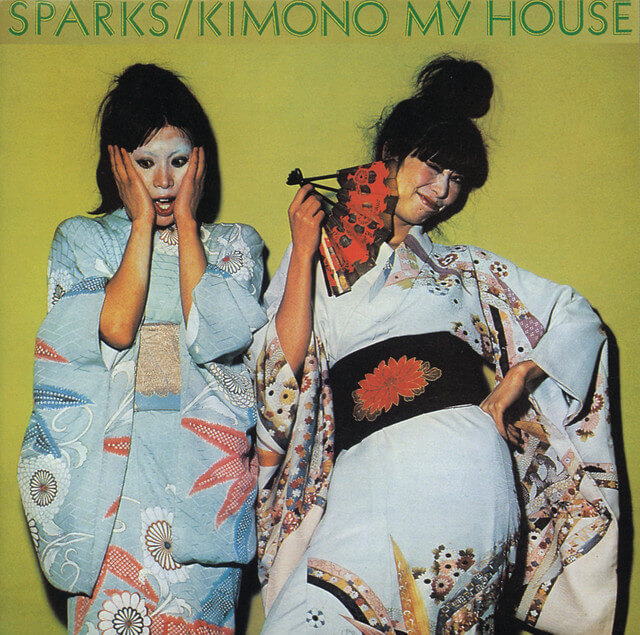 It seems like, no matter what sub-genre music list Paste writes, Sparks will find a way onto it somehow. Following up on
It seems like, no matter what sub-genre music list Paste writes, Sparks will find a way onto it somehow. Following up on 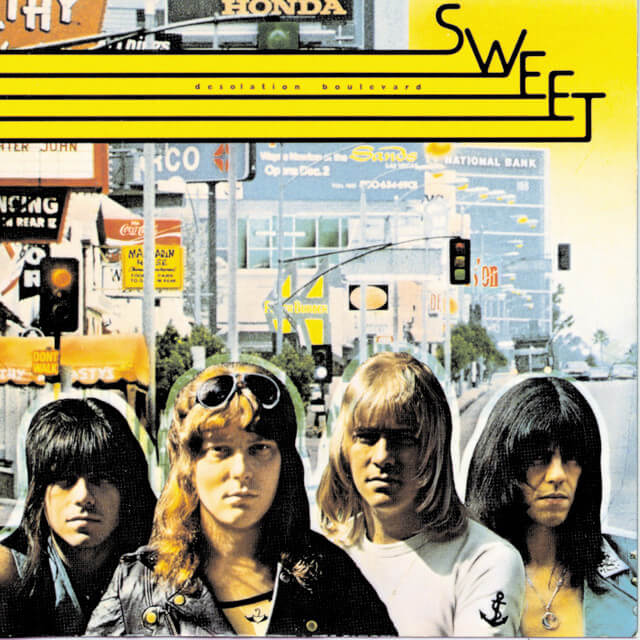 Sweet understood, in 1974, something that even their most prominent peers failed to grasp: Rock ‘n’ roll should be fun. Two different versions of Desolation Boulevard were released in 1974; it was only the United States version that contained the explosive opening track “Ballroom Blitz,” a song that would transcend generations with its fast-pace enchantment and off-kilter scene-setting existing as an entity all unto itself. It’s a song that takes a hold of you, possesses you with its infectious grooves. Desolation Boulevard however, isn’t just “Ballroom Blitz,” or even “Fox On The Run,” the other hit amongst its ranks. A song like “The Six Teens” offers a sappy, sentimental picture of young love, while “Someone Else Will” exudes some of the hardest hitting riffs and raunchiest lyrics. Through Desolation Boulevard, Sweet’s guitars glitter the sound of laughter as they create one of the catchiest and most joyous records of the entire glam catalog. —MD
Sweet understood, in 1974, something that even their most prominent peers failed to grasp: Rock ‘n’ roll should be fun. Two different versions of Desolation Boulevard were released in 1974; it was only the United States version that contained the explosive opening track “Ballroom Blitz,” a song that would transcend generations with its fast-pace enchantment and off-kilter scene-setting existing as an entity all unto itself. It’s a song that takes a hold of you, possesses you with its infectious grooves. Desolation Boulevard however, isn’t just “Ballroom Blitz,” or even “Fox On The Run,” the other hit amongst its ranks. A song like “The Six Teens” offers a sappy, sentimental picture of young love, while “Someone Else Will” exudes some of the hardest hitting riffs and raunchiest lyrics. Through Desolation Boulevard, Sweet’s guitars glitter the sound of laughter as they create one of the catchiest and most joyous records of the entire glam catalog. —MD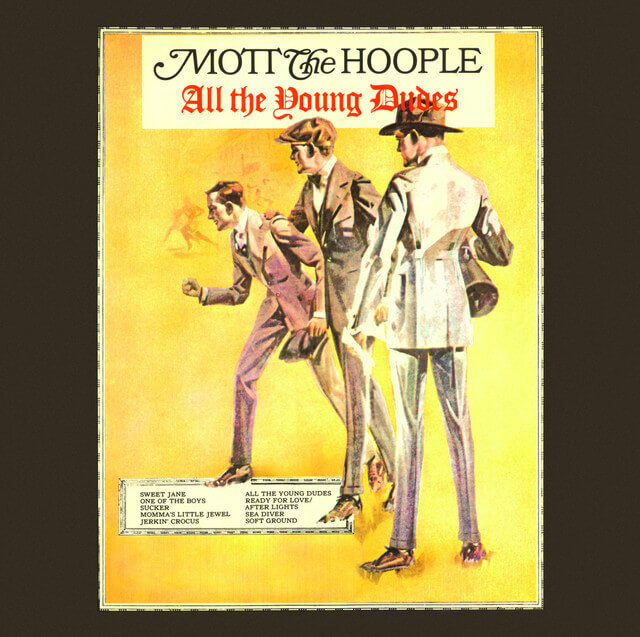 Five albums in, Mott The Hoople found their surest footing as a group with a little help from fan and friend David Bowie. It was the Thin White Duke who wrote the title track and gifted it to the group after they, if you can believe it, rejected “Suffragette City.” And it was his saxophone heard throughout the album, giving the right smattering of R&B muscle to songs like “Momma’s Little Jewel” and “One of the Boys.” Leader Ian Hunter and guitarist Mick Ralphs might not have needed Bowie’s assist as “Jerkin’ Crocus” and “Ready For Love” (a song subsequently recorded by Ralphs next project Bad Company) sounded like direct appeals to the ladies that may have been avoiding the group up to that point. Sensuality and heat were the order of the day rather than the hardheaded attitudes and slavish lust of previous albums. In the world of glam, directing attention from the head to the hips is always the right move. —RH
Five albums in, Mott The Hoople found their surest footing as a group with a little help from fan and friend David Bowie. It was the Thin White Duke who wrote the title track and gifted it to the group after they, if you can believe it, rejected “Suffragette City.” And it was his saxophone heard throughout the album, giving the right smattering of R&B muscle to songs like “Momma’s Little Jewel” and “One of the Boys.” Leader Ian Hunter and guitarist Mick Ralphs might not have needed Bowie’s assist as “Jerkin’ Crocus” and “Ready For Love” (a song subsequently recorded by Ralphs next project Bad Company) sounded like direct appeals to the ladies that may have been avoiding the group up to that point. Sensuality and heat were the order of the day rather than the hardheaded attitudes and slavish lust of previous albums. In the world of glam, directing attention from the head to the hips is always the right move. —RH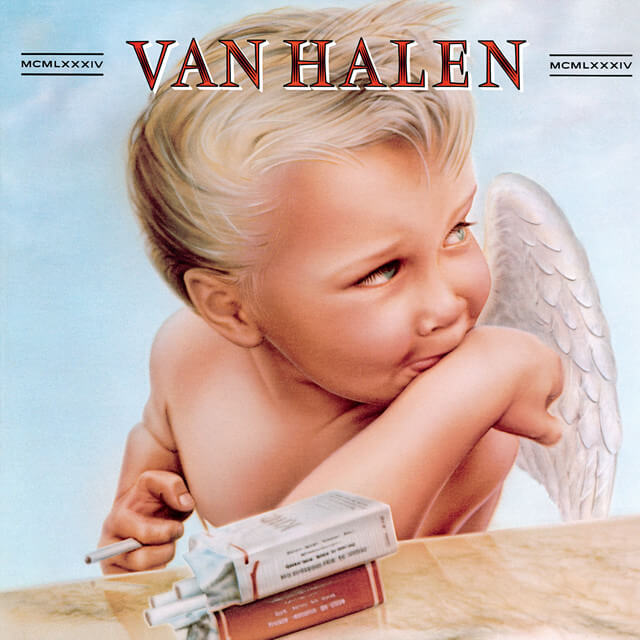 Squint your ears just so and you can hear it. Strip away the slick ’80s production, the Oberheim synthesizers and Eddie Van Halen’s guitar fireworks and 1984 could very well be a lost album by Sweet or Slade. These L.A. rockers begat generations of finger-tapping insanity and sleaze rock, but their sound is glam through and through. It just got overshadowed by the band’s goofball music videos, David Lee Roth’s acrobatic dance moves and generally coked up attitudes. Let there be no doubt though that they collectively hit a creative and commercial apex with 1984. Throwaway instrumental introduction notwithstanding, the album kicks into high gear from the opening chords of “Jump” and doesn’t release the throttle until “House of Pain” fades into the sunset. —RH
Squint your ears just so and you can hear it. Strip away the slick ’80s production, the Oberheim synthesizers and Eddie Van Halen’s guitar fireworks and 1984 could very well be a lost album by Sweet or Slade. These L.A. rockers begat generations of finger-tapping insanity and sleaze rock, but their sound is glam through and through. It just got overshadowed by the band’s goofball music videos, David Lee Roth’s acrobatic dance moves and generally coked up attitudes. Let there be no doubt though that they collectively hit a creative and commercial apex with 1984. Throwaway instrumental introduction notwithstanding, the album kicks into high gear from the opening chords of “Jump” and doesn’t release the throttle until “House of Pain” fades into the sunset. —RH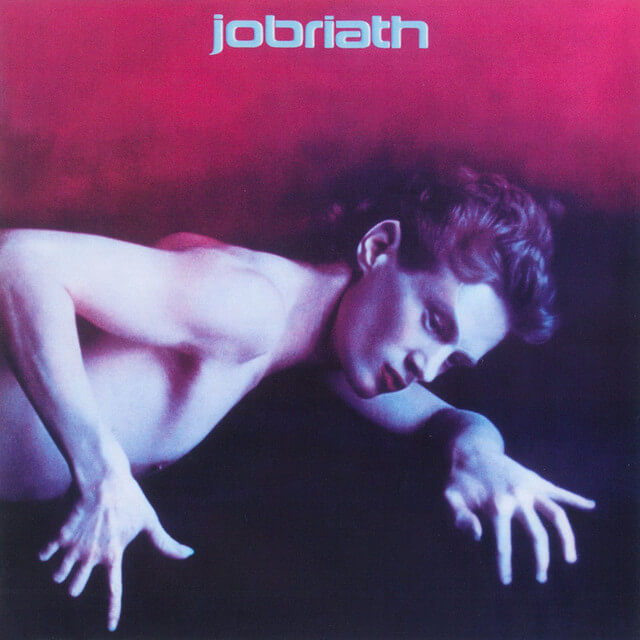 If we are to believe the legend, Elektra Records signed the artist known as Jobriath to a big record contract in hopes of drafting off the rapid ascendance of David Bowie post-Ziggy Stardust. Billboards were raised. Plans for a massive stage show were drawn up. And when Jobriath’s first album was finally unleashed… it sank without a trace. In the years since, students of glam and the history of LGBTQ+ art uncovered the 1973 LP and put it in its rightful place among other cult classics of the era. Jobriath may not have Bowie’s pliable voice but his charisma even in audio form is unmatched and the music is every bit the equal of Ziggy, Transformer or any of the other albums that the Starman had left his fingerprints on. Some days, I even prefer this raw, alien version of glam rock as it’s completely free of the hype and history that teeters above so many affirmed classics. Jobriath brought the spirit of the New York cabaret scene, his own interpretation of sci-fi glamour and an unblinking view of sexuality that included all manner of predilections. As bright and hot as a shooting star. —RH
If we are to believe the legend, Elektra Records signed the artist known as Jobriath to a big record contract in hopes of drafting off the rapid ascendance of David Bowie post-Ziggy Stardust. Billboards were raised. Plans for a massive stage show were drawn up. And when Jobriath’s first album was finally unleashed… it sank without a trace. In the years since, students of glam and the history of LGBTQ+ art uncovered the 1973 LP and put it in its rightful place among other cult classics of the era. Jobriath may not have Bowie’s pliable voice but his charisma even in audio form is unmatched and the music is every bit the equal of Ziggy, Transformer or any of the other albums that the Starman had left his fingerprints on. Some days, I even prefer this raw, alien version of glam rock as it’s completely free of the hype and history that teeters above so many affirmed classics. Jobriath brought the spirit of the New York cabaret scene, his own interpretation of sci-fi glamour and an unblinking view of sexuality that included all manner of predilections. As bright and hot as a shooting star. —RH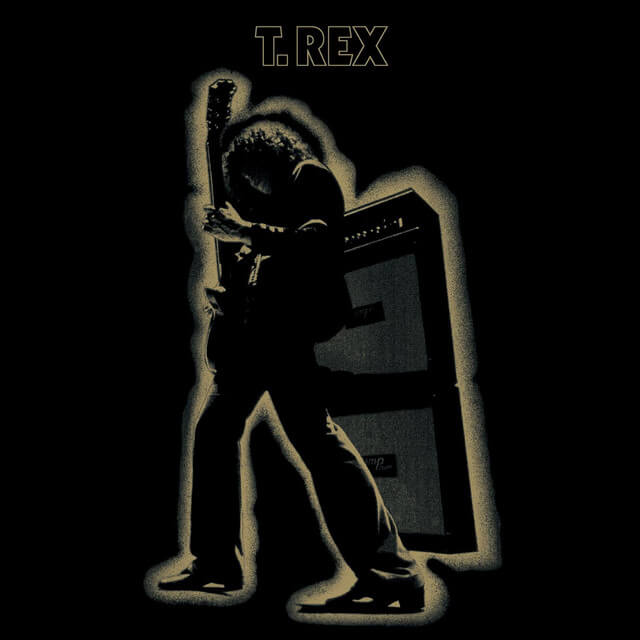
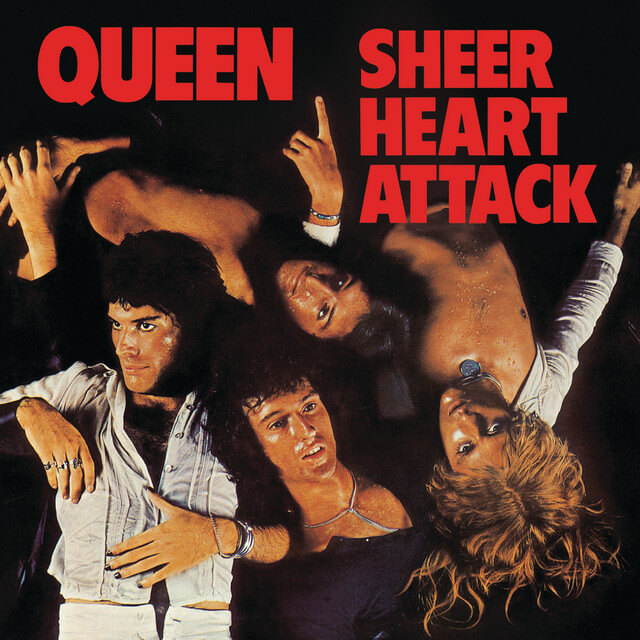 No one embodies glamour more than Freddie Mercury and Queen was always ready to deliver a spectacle. Their third studio album, Sheer Heart Attack, is a production filled with hard-hitting rock instrumentation from the unbreakable trio of Brian May, Roger Taylor and John Deacon, the unique vocal power of the deliciously flamboyant Freddie Mercury and outlandish experimental musical choices — carnival music anyone? These Brits were daring in every sense of the word and the stage of UK glam rock was the perfect stage for them to make their mark and embody what would become their trademark sound. The album’s first single, “Killer Queen,” became an international hit sonically painted with Mercury’s impeccable vocal range, a light poppy beat both accented by May’s fuzzy riffs and a chorus of the frontman’s layered harmonies. It was the perfect single to bring the band to the attention of the masses and the album delivered the orchestral electronics of “Lily Of The Valley,” the impressive speed of the drums and guitar of “Stone Cold Crazy,” and the circus intro of “Brighton Rock.” Sheer Heart Attack is operatic, theatric and dare I say, historic. —OA
No one embodies glamour more than Freddie Mercury and Queen was always ready to deliver a spectacle. Their third studio album, Sheer Heart Attack, is a production filled with hard-hitting rock instrumentation from the unbreakable trio of Brian May, Roger Taylor and John Deacon, the unique vocal power of the deliciously flamboyant Freddie Mercury and outlandish experimental musical choices — carnival music anyone? These Brits were daring in every sense of the word and the stage of UK glam rock was the perfect stage for them to make their mark and embody what would become their trademark sound. The album’s first single, “Killer Queen,” became an international hit sonically painted with Mercury’s impeccable vocal range, a light poppy beat both accented by May’s fuzzy riffs and a chorus of the frontman’s layered harmonies. It was the perfect single to bring the band to the attention of the masses and the album delivered the orchestral electronics of “Lily Of The Valley,” the impressive speed of the drums and guitar of “Stone Cold Crazy,” and the circus intro of “Brighton Rock.” Sheer Heart Attack is operatic, theatric and dare I say, historic. —OA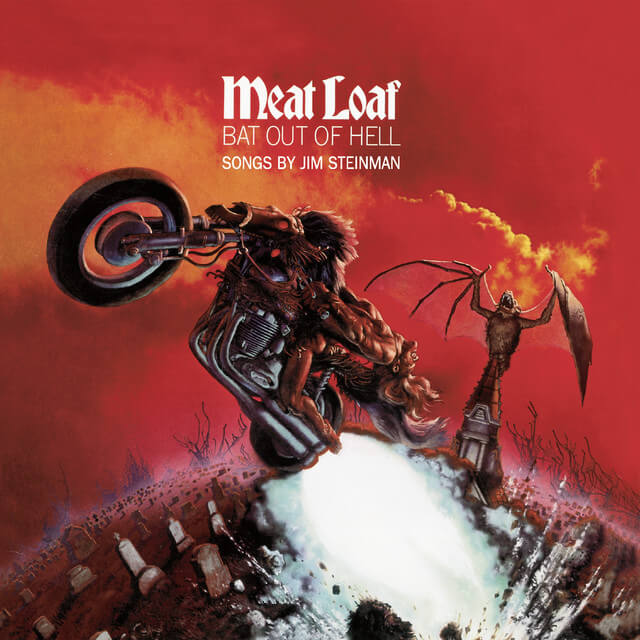 Meat Loaf had made a record with Shaun Murphy called Stoney and Meatloaf in 1971 on Motown’s Rare Earth subsidiary, but it wasn’t until 1977 that the Dallas-born vocalist would step out into his own collection of songs. When he linked up with songwriter Jim Steinman, the world was never the same—and their debut album together, Bat Out of Hell is one of the most memorable introductions in the history of rock ‘n’ roll altogether. Theatrical, campy and downright progressively enchanting, Bat Out of Hell is a delight from the title track all the way to “For Crying Out Loud.” It’s like watching a Broadway show unravel through a turntable, but with more gusto than an OST could ever muster. “Bat Out of Hell” has one of greatest earworm choruses of all time; “Paradise By the Dashboard Light” is so iconic its music video used to get played before showings of Rocky Horror Picture Show; “You Took the Words Right Out of My Mouth” and “Two Out of Three Ain’t Bad” are bold, rewarding ballads that showcase the echelons of Meat Loaf’s own vocal register. What a ridiculous, kooky and perfect album of strangeness. All hail Bat Out of Hell, the only thing in this world that is pure and good and right. —MM
Meat Loaf had made a record with Shaun Murphy called Stoney and Meatloaf in 1971 on Motown’s Rare Earth subsidiary, but it wasn’t until 1977 that the Dallas-born vocalist would step out into his own collection of songs. When he linked up with songwriter Jim Steinman, the world was never the same—and their debut album together, Bat Out of Hell is one of the most memorable introductions in the history of rock ‘n’ roll altogether. Theatrical, campy and downright progressively enchanting, Bat Out of Hell is a delight from the title track all the way to “For Crying Out Loud.” It’s like watching a Broadway show unravel through a turntable, but with more gusto than an OST could ever muster. “Bat Out of Hell” has one of greatest earworm choruses of all time; “Paradise By the Dashboard Light” is so iconic its music video used to get played before showings of Rocky Horror Picture Show; “You Took the Words Right Out of My Mouth” and “Two Out of Three Ain’t Bad” are bold, rewarding ballads that showcase the echelons of Meat Loaf’s own vocal register. What a ridiculous, kooky and perfect album of strangeness. All hail Bat Out of Hell, the only thing in this world that is pure and good and right. —MM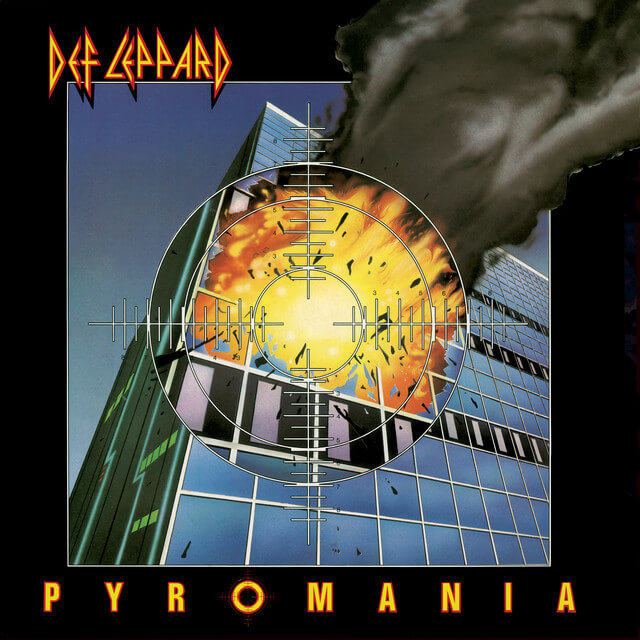 Def Leppard’s third studio album remains the greatest glam metal record ever made. Pyromania was their last great statement before turning to a more mainstream, chart-centric sound on Hysteria five years later. What Pyromania does, however, is showcase the prowess of sextet when they were at the very top of their game. Between Joe Elliott’s impassioned, unmistakable lead vocals, the dueling co-lead guitar work from Phil Collen and Steve Clark and Rick Allen’s masterful drumming, Def Leppard were hot shit and deserved to be. Songs like “Foolin’” and “Rock of Ages” are ‘80s staples, but the enduring proof that Pyromania is a 10/10 continues to be lead single “Photograph”—a larger-than-life rock classic that defined the band’s full shift from heavy metal-inspired guitar tunes to full-bodied concertos stuffed to the brim with stunning riffs, melodic hooks, punctuated solos and a wall of harmonies. It’s been certified diamond by the RIAA and found heavy MTV exposure, selling nearly 100,000 copies per week during its initial release. Pyromania is the definitive example of how to make glam rock commercial and critically dazzling all at once—a feat so few artists have ever pulled off so cleanly. —MM
Def Leppard’s third studio album remains the greatest glam metal record ever made. Pyromania was their last great statement before turning to a more mainstream, chart-centric sound on Hysteria five years later. What Pyromania does, however, is showcase the prowess of sextet when they were at the very top of their game. Between Joe Elliott’s impassioned, unmistakable lead vocals, the dueling co-lead guitar work from Phil Collen and Steve Clark and Rick Allen’s masterful drumming, Def Leppard were hot shit and deserved to be. Songs like “Foolin’” and “Rock of Ages” are ‘80s staples, but the enduring proof that Pyromania is a 10/10 continues to be lead single “Photograph”—a larger-than-life rock classic that defined the band’s full shift from heavy metal-inspired guitar tunes to full-bodied concertos stuffed to the brim with stunning riffs, melodic hooks, punctuated solos and a wall of harmonies. It’s been certified diamond by the RIAA and found heavy MTV exposure, selling nearly 100,000 copies per week during its initial release. Pyromania is the definitive example of how to make glam rock commercial and critically dazzling all at once—a feat so few artists have ever pulled off so cleanly. —MM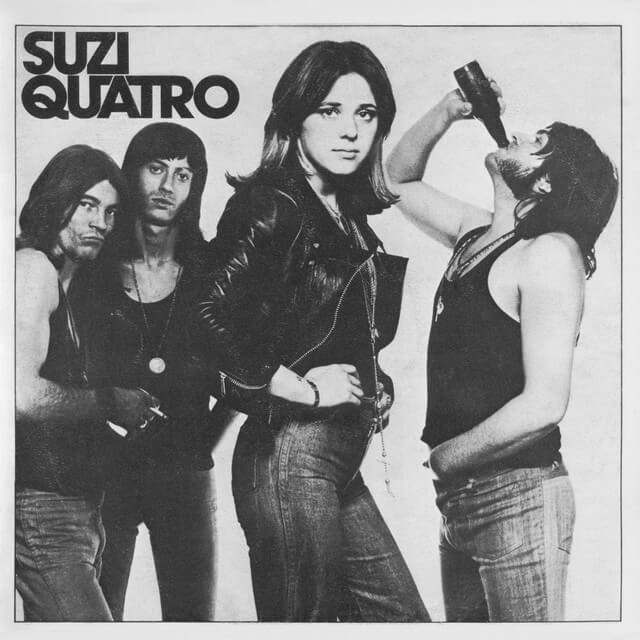 The Godmother of Glam Rock, Detroit’s Suzi Quatro is most-known for her “Stumblin’ In” duet with Chris Norman and her recurring role on Happy Days—yet, the mark she left on glam rock has never withered, and it’s most palpable on her 1973 eponymous debut album. You can see how Quatro’s work directly influenced bands like The Runaways, Joan Jett & the Blackhearts and The Raincoats, as she was tapping into a perfect meld of proto-punk and pop-rock. Songs like “48 Crash,” “Glycerine Queen” and “Primitive Love” are loud, sexy and unmistakable. Quatro’s cover of Elvis’ “All Shook Up” was so loved that the King himself supposedly reached out to her and said her cover was the best iteration of the song since his own. That’s according to Quatro, but I can believe it—the song rips. The inclusion of Suzi Quatro is a matter of recognizing a foundational, essential part of the glam rock canon. While the record is great, its influence has become more recognizable than the songs themselves. Quatro is glam royalty, though, and no one can deny her that legacy. —MM
The Godmother of Glam Rock, Detroit’s Suzi Quatro is most-known for her “Stumblin’ In” duet with Chris Norman and her recurring role on Happy Days—yet, the mark she left on glam rock has never withered, and it’s most palpable on her 1973 eponymous debut album. You can see how Quatro’s work directly influenced bands like The Runaways, Joan Jett & the Blackhearts and The Raincoats, as she was tapping into a perfect meld of proto-punk and pop-rock. Songs like “48 Crash,” “Glycerine Queen” and “Primitive Love” are loud, sexy and unmistakable. Quatro’s cover of Elvis’ “All Shook Up” was so loved that the King himself supposedly reached out to her and said her cover was the best iteration of the song since his own. That’s according to Quatro, but I can believe it—the song rips. The inclusion of Suzi Quatro is a matter of recognizing a foundational, essential part of the glam rock canon. While the record is great, its influence has become more recognizable than the songs themselves. Quatro is glam royalty, though, and no one can deny her that legacy. —MM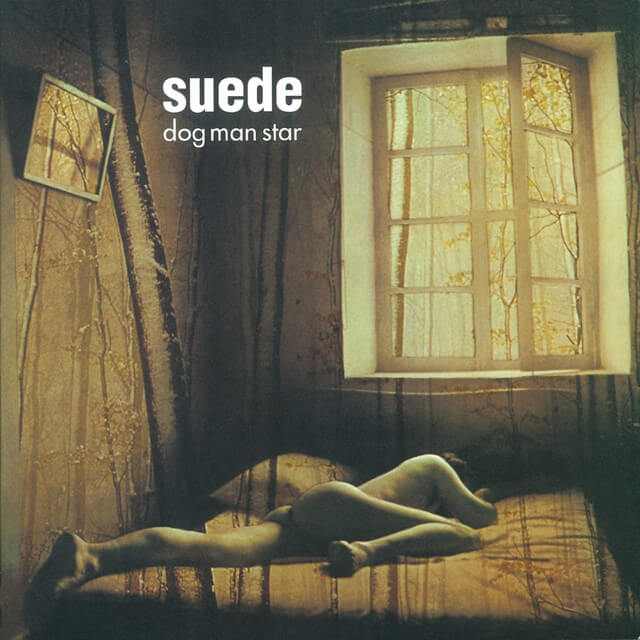 The hype surrounding Suede was dying down by the time writing began for their second album, as they were being supplanted by the rising titans of Britpop. Disinterested in being associated with that world, the group retreated into their own world of literary influences, sexual fluidity and a keen appreciation for fellow genre-agnostic artists like Bowie, Scott Walker and Lou Reed. Not even intra-band tensions (founding guitarist Bernard Butler was at odds with the rest of the group) could dim the shocking brilliance of Dog Star Man. The glitter blast of the debut was still very much present, but burnt more around the edges as front man Brett Anderson sunk deeper into his romantic cravings and his very suspicious relationship with fame. He was wise to how celebrity chews people up and spits them out, and surely feared for his own sanity as he watched Suede’s profile rise dramatically. He came down to earth, kicking and spitting with the rest of his band providing a soundtrack of snaky rock and magic hour balladry. —RH
The hype surrounding Suede was dying down by the time writing began for their second album, as they were being supplanted by the rising titans of Britpop. Disinterested in being associated with that world, the group retreated into their own world of literary influences, sexual fluidity and a keen appreciation for fellow genre-agnostic artists like Bowie, Scott Walker and Lou Reed. Not even intra-band tensions (founding guitarist Bernard Butler was at odds with the rest of the group) could dim the shocking brilliance of Dog Star Man. The glitter blast of the debut was still very much present, but burnt more around the edges as front man Brett Anderson sunk deeper into his romantic cravings and his very suspicious relationship with fame. He was wise to how celebrity chews people up and spits them out, and surely feared for his own sanity as he watched Suede’s profile rise dramatically. He came down to earth, kicking and spitting with the rest of his band providing a soundtrack of snaky rock and magic hour balladry. —RH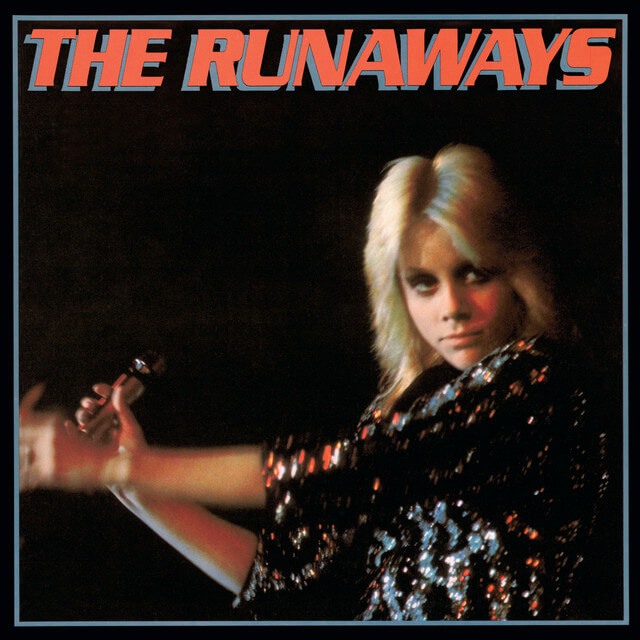 Joan Jett may have cemented her status as a rock legend with Joan Jett and the Blackhearts, but it all began with her four years in The Runaways. The all-female rock band formed in 1975 and released its eponymous debut a year later, with Cherie Currie and Joan Jett splitting time at the mic, Lita Ford on lead guitar, Jackie Fox on bass and Sandy West on drums. An album wrought with the five badass teen girls singing about sex, drugs and debauchery — a far cry from the women playing on the radio in the mid-70s. 20th century debuts always loved a good cover and The Runaways is no different with their cover of the Velvet Underground’s “Rock and Roll” featuring more than a little cowbell. However, their t(h)rashy smash hit “Cherry Bomb” is what endures with its headbanging intro and attitude-laden vocals as an anthem for every girl who has ever told their mom “they just don’t understand.” These West Coast rockers, with their eyelids caked in glitter, messy mullets, platform boots and deep, raspy vocals, hit big in Japan during their short run as a group but missed out on success in America. Perhaps Americans weren’t ready for The Runaways to drive them wild. —OA
Joan Jett may have cemented her status as a rock legend with Joan Jett and the Blackhearts, but it all began with her four years in The Runaways. The all-female rock band formed in 1975 and released its eponymous debut a year later, with Cherie Currie and Joan Jett splitting time at the mic, Lita Ford on lead guitar, Jackie Fox on bass and Sandy West on drums. An album wrought with the five badass teen girls singing about sex, drugs and debauchery — a far cry from the women playing on the radio in the mid-70s. 20th century debuts always loved a good cover and The Runaways is no different with their cover of the Velvet Underground’s “Rock and Roll” featuring more than a little cowbell. However, their t(h)rashy smash hit “Cherry Bomb” is what endures with its headbanging intro and attitude-laden vocals as an anthem for every girl who has ever told their mom “they just don’t understand.” These West Coast rockers, with their eyelids caked in glitter, messy mullets, platform boots and deep, raspy vocals, hit big in Japan during their short run as a group but missed out on success in America. Perhaps Americans weren’t ready for The Runaways to drive them wild. —OA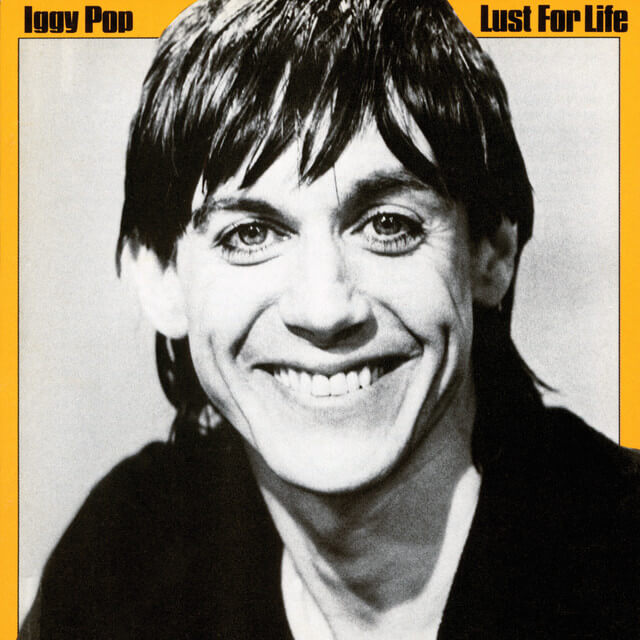 There are tinges of glam rock in some Stooges songs, so it makes sense that, by the time his second solo album came out, Iggy Pop was the only person on Earth who could fuse proto-punk, new wave and glam into his own strange, wonderful world. Lust For Life is a bit more accessible than its predecessor, the dark, brooding, mechanical art rock masterpiece The Idiot—which Pop made after the Stooges broke up and he was in the midst of a deep, debilitating drug addiction. David Bowie would produce both albums, but I’ve always loved his work on Lust For Life just a smidge more. He’s the only guy who’s ever been able to yank the very best and kookiest risks out of Pop, and songs like “The Passenger,” the title track and “Tonight” are campy, theatrical and quintessentially Iggy. You might be fuming at this pick; how could we possibly pick an Iggy Pop record over T. Rex, Queen, Mott the Hoople and Brian Eno? Some things don’t have to be so explicitly evocative to register as worthy—like how Suicide’s self-titled album was a precursor to the synth-pop boom but it as industrial, minimalist and brash as they come. Pop is responsible for quite a few bricks in the glam rock foundation, and Lust For Life is one of the greatest post-Stooges things he’s given to us. The album came out at the tail-end of the sub-genre, as glam rock was pivoting to glam metal. Lust For Life is a perfect bridge between eras. —MM
There are tinges of glam rock in some Stooges songs, so it makes sense that, by the time his second solo album came out, Iggy Pop was the only person on Earth who could fuse proto-punk, new wave and glam into his own strange, wonderful world. Lust For Life is a bit more accessible than its predecessor, the dark, brooding, mechanical art rock masterpiece The Idiot—which Pop made after the Stooges broke up and he was in the midst of a deep, debilitating drug addiction. David Bowie would produce both albums, but I’ve always loved his work on Lust For Life just a smidge more. He’s the only guy who’s ever been able to yank the very best and kookiest risks out of Pop, and songs like “The Passenger,” the title track and “Tonight” are campy, theatrical and quintessentially Iggy. You might be fuming at this pick; how could we possibly pick an Iggy Pop record over T. Rex, Queen, Mott the Hoople and Brian Eno? Some things don’t have to be so explicitly evocative to register as worthy—like how Suicide’s self-titled album was a precursor to the synth-pop boom but it as industrial, minimalist and brash as they come. Pop is responsible for quite a few bricks in the glam rock foundation, and Lust For Life is one of the greatest post-Stooges things he’s given to us. The album came out at the tail-end of the sub-genre, as glam rock was pivoting to glam metal. Lust For Life is a perfect bridge between eras. —MM Todd Rundgren made 75% of this album all by himself, oscillating between instruments and singing every vocal layer. The result is a 90-minute project that feels narrowed-in, a seismic rendering of Rundgren’s artistic vision. Even with the massive runtime, Something/Anything? still feels particularly lean—likely propelled by the propsensive lightness of songs like “Hello It’s Me,” “Couldn’t I Just Tell You” and “It Wouldn’t Have Made Any Difference.” The record taps into a wide spectrum of genres, toying with everything from R&B to psychedelia to, of course, glam rock. It’s fun to look back on Rundgren’s trajectory after this album, as the follow-up, A Wizard, A True Star, would find multi-instrumentalist exploring his most offbeat, progressive and avant-garde work yet. In comparison, Something/Anything? is a tamer, more accessible foray into the magic of one-man music. It’s a pop masterpiece coated in the glitz of a pre-David Bowie world. Glam rock would completely transform only a few months after Something/Anything? came out, namely because of The Rise and Fall of Ziggy Stardust and the Spiders From Mars. Thanks to the enduring mastery of “I Saw the Light,” Rundgren remains a talismanic, guiding figure in the subgenre’s earliest moments. —MM
Todd Rundgren made 75% of this album all by himself, oscillating between instruments and singing every vocal layer. The result is a 90-minute project that feels narrowed-in, a seismic rendering of Rundgren’s artistic vision. Even with the massive runtime, Something/Anything? still feels particularly lean—likely propelled by the propsensive lightness of songs like “Hello It’s Me,” “Couldn’t I Just Tell You” and “It Wouldn’t Have Made Any Difference.” The record taps into a wide spectrum of genres, toying with everything from R&B to psychedelia to, of course, glam rock. It’s fun to look back on Rundgren’s trajectory after this album, as the follow-up, A Wizard, A True Star, would find multi-instrumentalist exploring his most offbeat, progressive and avant-garde work yet. In comparison, Something/Anything? is a tamer, more accessible foray into the magic of one-man music. It’s a pop masterpiece coated in the glitz of a pre-David Bowie world. Glam rock would completely transform only a few months after Something/Anything? came out, namely because of The Rise and Fall of Ziggy Stardust and the Spiders From Mars. Thanks to the enduring mastery of “I Saw the Light,” Rundgren remains a talismanic, guiding figure in the subgenre’s earliest moments. —MM Even now, 50 years on from its release, New York Dolls oozes with a sense of dread. Yes, there’s aggression, but there’s also an all-consuming anxiety as well—the feeling that invasion is imminent. The band are often the invaders, like on the aforementioned “Frankenstein,” a towering, propulsive shudder of a song that traces the path of outsiders swarming the city in search of excitement—only to find themselves still considered the freaks, still ostracized. While Johansen near-screeches “I’m gonna shout about it, bitch about it, scream about it, cry about it,” as that track reaches its fever pitch, he reverses roles completely on the prior track, “Lonely Planet Boy.” He coos along with a meandering saxophone line on an isolated, potentially obliterated city street. Even in its melancholy longing, there’s a disquiet to it—if he croons too loudly, the warped cymbals (which arrive near the track’s conclusion) will morph into an actual UFO and snatch him off the street. Even the invaders fear the outside invasion looming over otherwise straightforward tales of adolescent lust. —Elise Soutar
Even now, 50 years on from its release, New York Dolls oozes with a sense of dread. Yes, there’s aggression, but there’s also an all-consuming anxiety as well—the feeling that invasion is imminent. The band are often the invaders, like on the aforementioned “Frankenstein,” a towering, propulsive shudder of a song that traces the path of outsiders swarming the city in search of excitement—only to find themselves still considered the freaks, still ostracized. While Johansen near-screeches “I’m gonna shout about it, bitch about it, scream about it, cry about it,” as that track reaches its fever pitch, he reverses roles completely on the prior track, “Lonely Planet Boy.” He coos along with a meandering saxophone line on an isolated, potentially obliterated city street. Even in its melancholy longing, there’s a disquiet to it—if he croons too loudly, the warped cymbals (which arrive near the track’s conclusion) will morph into an actual UFO and snatch him off the street. Even the invaders fear the outside invasion looming over otherwise straightforward tales of adolescent lust. —Elise Soutar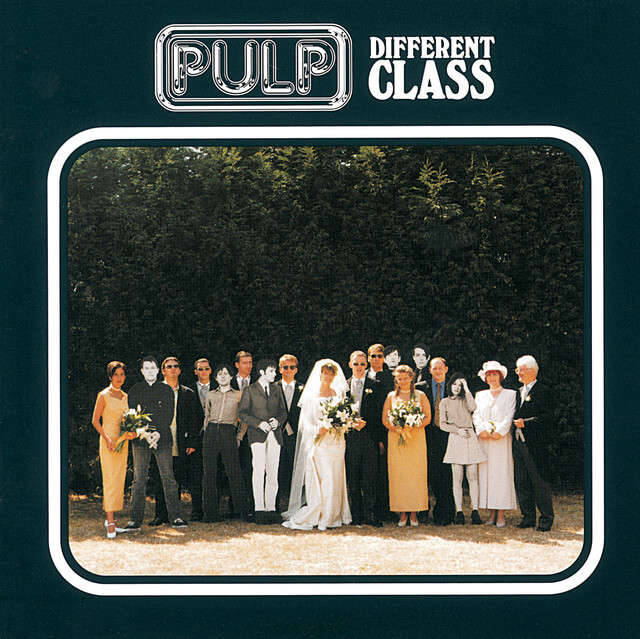 “We don’t want no trouble, we just want the right to be different. That’s all.” Written in the album’s liner notes, this was the rallying cry of Pulp’s Different Class, as the group forged an entirely singular lane for themselves amidst the mid-’90’s Britpop craze. Different Class, sees Pulp’s building a vision of the UK, one that is predicated on about two things: sex and socialism. This isn’t meant to sound reductive, quite the opposite, really. Jarvis Cocker’s delivery is always straight up, perhaps crude at times, like on back-end track “Underwear,” where he states plainly, “I would give anything to see it / just you stood there / in your underwear.” The anthemic “Common People” starts at a whisper, but builds with a shriek, as the band’s anecdote about a rich woman’s fascination with immersing herself in the plights of a working class lifestyle quickly turns into an admonition of Britain’s out-of-touch upper class. It is an affirmation of the estranged, the left-of-center. Opening track “Mis-Shapes” sets this up from the beginning. “Mis-Shapes, mistakes, misfits,” Cocker sings “We don’t look the same as you / We don’t do the things you do / But we live here too.” The beat he sings over is skittering, picking up speed as it goes along. He keeps up. Different Class took the gaudy and ostentatious joy of glam rock and imbued it with a working class authenticity, a steady drum beating the UK’s harsher realities. It didn’t pull glam all the way back down to earth, but, perhaps, it tugged it a bit from the cosmos—serving as the most poignant reminder that the right answer to “Oasis or Blur” is and will always be “Pulp.” —MD
“We don’t want no trouble, we just want the right to be different. That’s all.” Written in the album’s liner notes, this was the rallying cry of Pulp’s Different Class, as the group forged an entirely singular lane for themselves amidst the mid-’90’s Britpop craze. Different Class, sees Pulp’s building a vision of the UK, one that is predicated on about two things: sex and socialism. This isn’t meant to sound reductive, quite the opposite, really. Jarvis Cocker’s delivery is always straight up, perhaps crude at times, like on back-end track “Underwear,” where he states plainly, “I would give anything to see it / just you stood there / in your underwear.” The anthemic “Common People” starts at a whisper, but builds with a shriek, as the band’s anecdote about a rich woman’s fascination with immersing herself in the plights of a working class lifestyle quickly turns into an admonition of Britain’s out-of-touch upper class. It is an affirmation of the estranged, the left-of-center. Opening track “Mis-Shapes” sets this up from the beginning. “Mis-Shapes, mistakes, misfits,” Cocker sings “We don’t look the same as you / We don’t do the things you do / But we live here too.” The beat he sings over is skittering, picking up speed as it goes along. He keeps up. Different Class took the gaudy and ostentatious joy of glam rock and imbued it with a working class authenticity, a steady drum beating the UK’s harsher realities. It didn’t pull glam all the way back down to earth, but, perhaps, it tugged it a bit from the cosmos—serving as the most poignant reminder that the right answer to “Oasis or Blur” is and will always be “Pulp.” —MD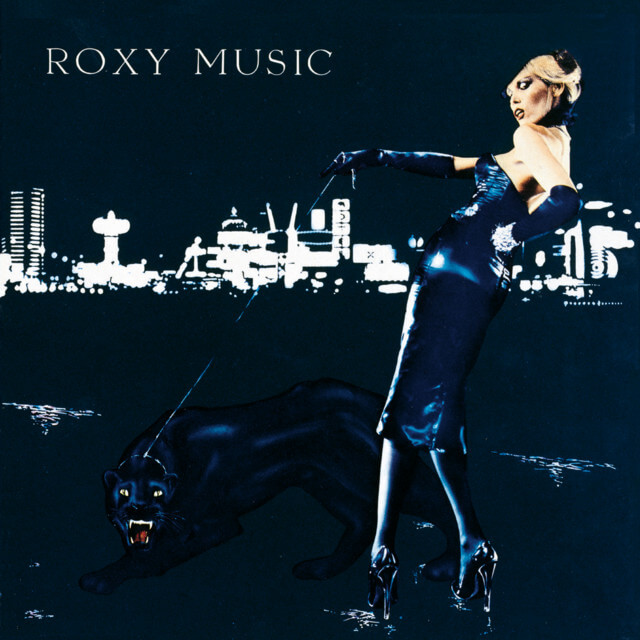 The sizable splash that Roxy Music’s debut album made afforded them a lot when they returned to the studio to make its follow up. Now they could further tweak the pop music formula and really see what sort of trouble they could get into in the studio. That freedom of movement let leader Bryan Ferry wander down some dark passages as he tracked the mental state of a man obsessed with a blowup doll (“In Ever Dream Home A Heartache”), bore the weight of imposter syndrome (“The Bogus Man”) and dared to spotlight the hangovers and regrets that are often the aftermath of our impulsive, momentary pleasures. Ferry takes care to remind us that he’s not immune to such things, even if he projects the image of a devil-may-care bon vivant. It’s the rest of the band that gives For Your Pleasure its incisive sting and 9-volt battery to the tongue acidity. They were the perfect combination, each player using their respective instruments for texture and color rather than straight up melody. Even the solos seem to sink into the greater canvas of the music rather than draw attention to itself. Don’t let Ferry’s grinning visage on the back cover fool you. You can hop in the limo with Amanda Lear if you want to, but she’s bringing the panther and it does not look happy. —RH
The sizable splash that Roxy Music’s debut album made afforded them a lot when they returned to the studio to make its follow up. Now they could further tweak the pop music formula and really see what sort of trouble they could get into in the studio. That freedom of movement let leader Bryan Ferry wander down some dark passages as he tracked the mental state of a man obsessed with a blowup doll (“In Ever Dream Home A Heartache”), bore the weight of imposter syndrome (“The Bogus Man”) and dared to spotlight the hangovers and regrets that are often the aftermath of our impulsive, momentary pleasures. Ferry takes care to remind us that he’s not immune to such things, even if he projects the image of a devil-may-care bon vivant. It’s the rest of the band that gives For Your Pleasure its incisive sting and 9-volt battery to the tongue acidity. They were the perfect combination, each player using their respective instruments for texture and color rather than straight up melody. Even the solos seem to sink into the greater canvas of the music rather than draw attention to itself. Don’t let Ferry’s grinning visage on the back cover fool you. You can hop in the limo with Amanda Lear if you want to, but she’s bringing the panther and it does not look happy. —RH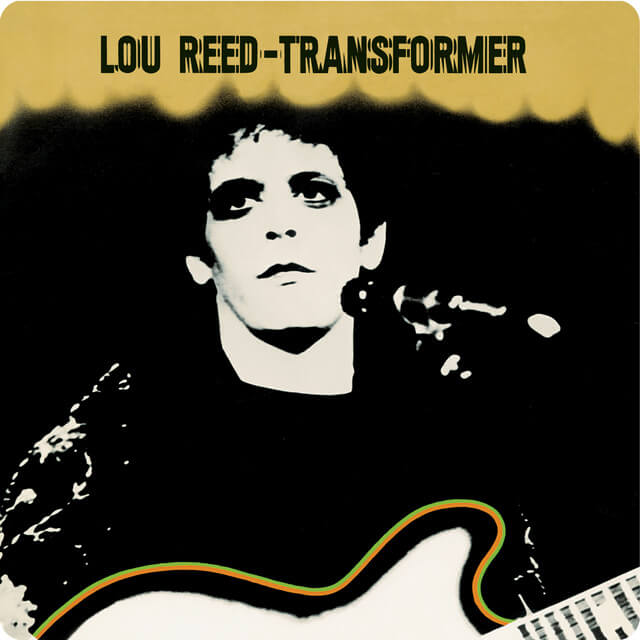 The two greatest glam rock records both coming out in 1972 is no coincidence; it was the sub-genre’s best year for a reason. Lou Reed’s second album in only six months, Transformer, broke a mold no one knew had even existed. David Bowie and Mick Ronson co-produced Reed’s opus, injecting their own finesse into the monotone hubris of the ex-Velvet Underground’s oeuvre—and the results are otherworldly. In one of the first rock records to truly boast songs about gender, sex work, drugs and sexuality in ways that were not indicative of the mainstream psyche, Transformer destroyed everyone’s preconceptions of who Lou Reed was or what Lou Reed was capable of. Sure, “Walk on the Wild Side” is the go-to hit from the album, but songs like “Vicious” and “Satellite of Love” and “Perfect Day” are poppy, patient and dense. Given that the second side of the record is full of Broadway-inspired, campy tunes, you can see how the project might have inspired later glam records like Bat Out of Hell and, even, The Lemon Twigs’ Songs For the General Public. But Transformer is, at its very core, a love-letter to the imperfect ugliness of New York City—how the streets want Reed and his friends dead, yet they still glow each morning. The album is pastoral poetry tinged with Bowie and Ronson’s touch. What an orbit to be in 51 years ago. —MM
The two greatest glam rock records both coming out in 1972 is no coincidence; it was the sub-genre’s best year for a reason. Lou Reed’s second album in only six months, Transformer, broke a mold no one knew had even existed. David Bowie and Mick Ronson co-produced Reed’s opus, injecting their own finesse into the monotone hubris of the ex-Velvet Underground’s oeuvre—and the results are otherworldly. In one of the first rock records to truly boast songs about gender, sex work, drugs and sexuality in ways that were not indicative of the mainstream psyche, Transformer destroyed everyone’s preconceptions of who Lou Reed was or what Lou Reed was capable of. Sure, “Walk on the Wild Side” is the go-to hit from the album, but songs like “Vicious” and “Satellite of Love” and “Perfect Day” are poppy, patient and dense. Given that the second side of the record is full of Broadway-inspired, campy tunes, you can see how the project might have inspired later glam records like Bat Out of Hell and, even, The Lemon Twigs’ Songs For the General Public. But Transformer is, at its very core, a love-letter to the imperfect ugliness of New York City—how the streets want Reed and his friends dead, yet they still glow each morning. The album is pastoral poetry tinged with Bowie and Ronson’s touch. What an orbit to be in 51 years ago. —MM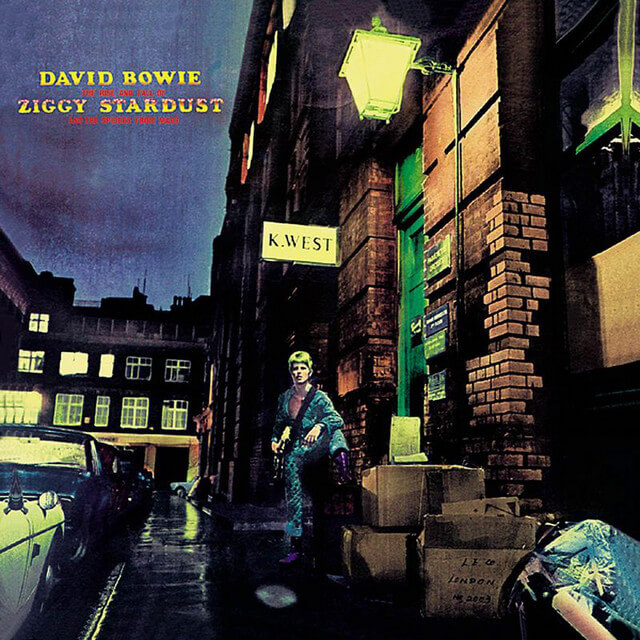 Like so many great albums, copious amounts of ink and pixels have been spilled, reminding the world of the greatness of David Bowie’s fifth studio album and how it continues to usher in new fans and new acolytes with each passing year. And if it wasn’t the record itself it was Bowie’s appearance with the Spiders from Mars on Top of the Pops, which introduced thousands of young Brits to the alien sounds and fashion that he was already making his own. Does saying it a million times make it any less true? If anything, repeating it only helps cement this notion in the cultural mind trust. Bowie uncovered a new port to plug into, which shocked his hair into a dark shade of red and turned his songwriting mind toward a loose concept album about a musical martyr that may or may not be an alien. So loose that he and the band abandon the path to veer off into nasty rockers, visions of Armageddon and lightly hippie-ish love songs. Hell, they didn’t even introduce the titular character properly until the album was almost over. That’s how confident Bowie and the band were in what they were producing here. They found a new path forward in the already over-saturated rock world that was open to the influence of modern dance and dazzling costumes and pale androgynous pin-up idols. With one swift kick of a platform boot and one frizzy chord from Mick Ronson’s guitar, they left the door wide open for multiple generations of misfits and mistakes with their broken biscuits, copies of White Light / White Heat and spangled costumes to join them. —RH
Like so many great albums, copious amounts of ink and pixels have been spilled, reminding the world of the greatness of David Bowie’s fifth studio album and how it continues to usher in new fans and new acolytes with each passing year. And if it wasn’t the record itself it was Bowie’s appearance with the Spiders from Mars on Top of the Pops, which introduced thousands of young Brits to the alien sounds and fashion that he was already making his own. Does saying it a million times make it any less true? If anything, repeating it only helps cement this notion in the cultural mind trust. Bowie uncovered a new port to plug into, which shocked his hair into a dark shade of red and turned his songwriting mind toward a loose concept album about a musical martyr that may or may not be an alien. So loose that he and the band abandon the path to veer off into nasty rockers, visions of Armageddon and lightly hippie-ish love songs. Hell, they didn’t even introduce the titular character properly until the album was almost over. That’s how confident Bowie and the band were in what they were producing here. They found a new path forward in the already over-saturated rock world that was open to the influence of modern dance and dazzling costumes and pale androgynous pin-up idols. With one swift kick of a platform boot and one frizzy chord from Mick Ronson’s guitar, they left the door wide open for multiple generations of misfits and mistakes with their broken biscuits, copies of White Light / White Heat and spangled costumes to join them. —RH






































